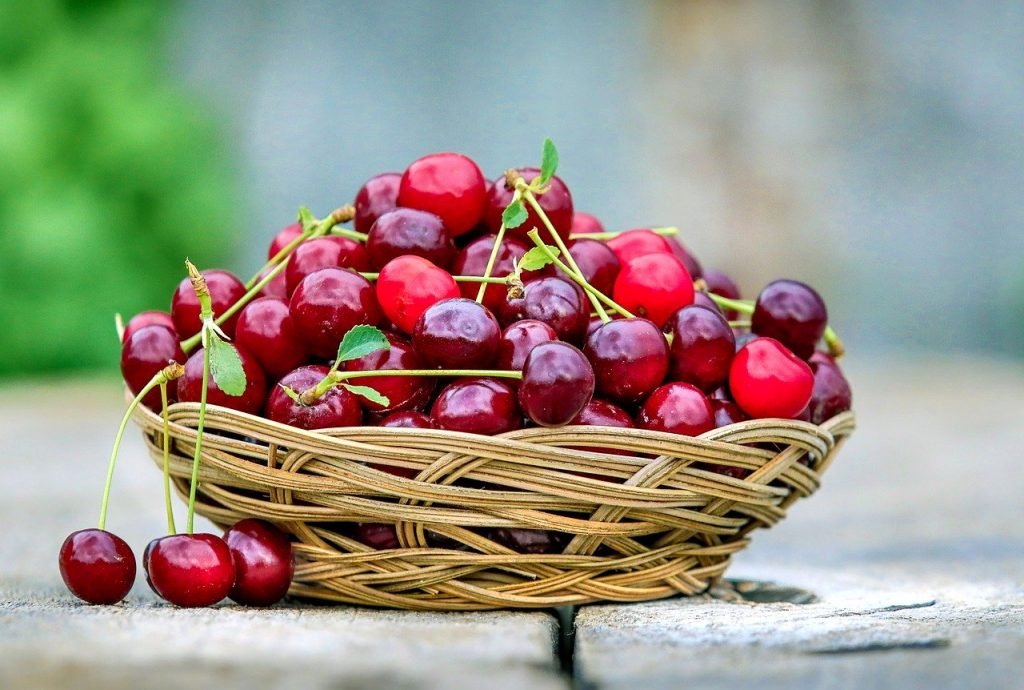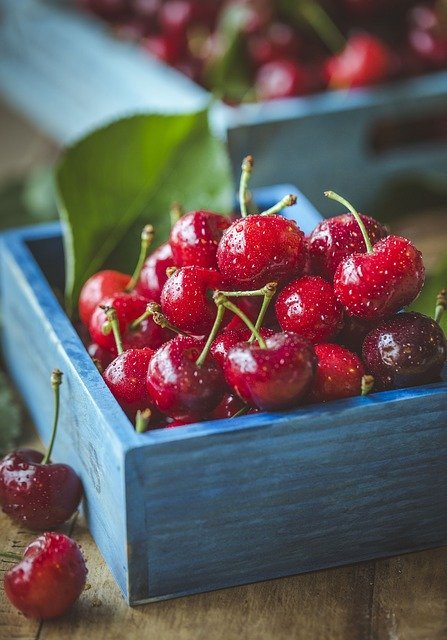Amazing Benefits Of Cherries For Skin, Hair And Health

The cherry blossoms(cherries) announce the spring equinox and carry a whole symbology that the peoples of the Far East have incorporated into their rites and culture.
The Japanese see in them one of the manifestations of beauty in its purest form. The sakura blossom is a symbol of purity and the emblem of the bushi or chivalrous ideal.
For samurai that same flower turned towards the sun symbolizes the devotion of their lives.
Ornamental cherry trees abound in Japanese cities, which do not bear fruit but are cultivated for their decorative value and because they are a national emblem.
And in honor of its spectacular flowering, the hanami festival is held , in which family and friends gather to share food under the shade of their glasses.
Also in our country we can attend the beautiful show that cherry trees offer. The flowering of the Valle del Jerte is among the greatest spectacles that nature can offer every year
But the enjoyment it offers only anticipates another just as expected in the months that follow: that of tasting its wonderful fruit, with its crimson, bright, juicy, seductive pulp, which is also full of substances that enhance health.
The cherry is believed to be native to Asia Minor and its cultivation comes from the ancient Greek colony Kerasos, now Giresun, on the Black Sea coast.
Birds and human migrations contributed to its spread and today the cherry tree is cultivated in many areas of the world with a temperate climate. The countries with the highest production are Turkey, Russia, the United States, Germany, Italy, France and Spain.
Cherry trees belong to the Rosaceae family, of the genus Prunus, such as apricot, plum or peach. They are descended from two wild species: Prunus avium, with sweet and dark fruits, and Prunus cerasus, with more acidic fruits and bright red.
Properties of Cherries
Poor in fats and proteins, the cherry is abundant in carbohydrates (13% of its weight), especially fructose; although its caloric intake (59 calories per 100 g) is medium.
Its potassium content (210 mg / 100 g) stands out, a mineral that favors the formation of urine and also fiber (2%), which gives it a laxative effect.
Its vitamins include C (15 mg / 100 g), folic acid (14 mcg), beta-carotene or provitamin A and vitamins B1 and B6. In addition, it is rich in anthocyanins and ellagic acid, powerful antioxidants.
Benefits of Cherries

These juicy red pearls are very healthy and no adverse reactions to their consumption can be expected, although they should only be eaten in moderation by people with digestive difficulties or those prone to kidney stones, due to their oxalic acid content.
• Rheumatism and arthritis. Due to its purifying and antioxidant components, as well as the presence of salicylic acid, cherries have anti-inflammatory properties.
• Diabetes. They reduce the risk of this disease and its complications (retinopathy, etc.). Furthermore, they are well tolerated by diabetics due to their low glycemic index fructose and levulose content.
• Liver disorders. They help reduce cholesterol and triglyceride levels in the blood and their possible accumulation in the liver. They also prevent the formation of gallstones.
• Heart. Various phenolic components that are abundant in cherry protect the cardiovascular system and prevent angina and myocardial infarction.
• Obesity. They are recommended in diets to reduce weight for its satiating, laxative and diuretic effect. This is due to its fiber, water and potassium content, as well as the low contribution of lipids and sodium.
• Beauty. Thanks to its vitamins A and C they protect and soften the skin. They also favor tanning due to their carotene content and can help reduce cellulite, as they improve microcirculation and inflammation of the subcutaneous tissue.
• Intestinal disorders. Its regulatory action improves constipation and meteorism (excessive gas formation).
• Gout. To lower uric acid levels, there is nothing better than a cherry cure. Some gouty say that when they notice the first symptoms of an attack, 30 cherries are enough to calm it down.
• Cancer. Its richness in bioflavonoids, especially anthocyanins, pigments to which they owe their bluish reddish color and that have antioxidant properties, capable of preventing cell degeneration, eating cherries helps to reduce the risk of cancer, particularly colon cancer. Its ellagic acid content reinforces its protective properties.
• Anti-aging. The components of the cherry purify the organism and protect the nervous and vascular system (prevent atherosclerosis); therefore it can be considered an “anti-aging” food.
• Dream. Its richness in melatonin, a hormone that secretes the pineal gland at night helps regulate sleep.
Cherries in the kitchen
The cherries reach their fullness in spring, although some variety lasts until the end of summer. In addition to being consumed as table fruit, it is also possible to include them in salads, soups, sauces, desserts, ice creams or as a garnish for meat dishes.
There are sweet, sour and mixed. One of the main differences is the one established between cherries and pillory. The cherries –generally sweet– have a long and fine tail, while the pillory – larger, redder and darker, and slightly acidic – are marketed without the stem, since it comes off naturally when picked.
PURCHASE AND CONSERVATION
Cherries are not suited to sudden changes in temperature. They must be kept in the upper part of the refrigerator, without piling them up and covered with film or a cloth, for a maximum of three days. As they do not increase their sweetness after harvesting, they must be chosen and consumed at their point.






